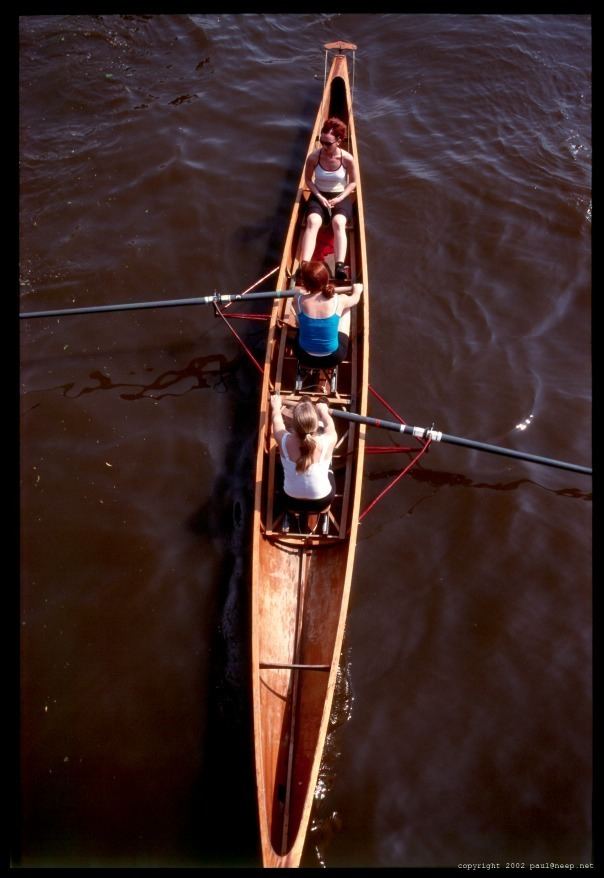 | ||
Human-powered watercrafts are watercrafts propelled by human power.
Contents
The three main methods of collecting human power are directly from the hands or feet, through the hands with oars, paddles, or poles, or through the feet with pedals and a crank or treadle.
While most human-powered watercraft use buoyancy to maintain their position relative to the surface of the water, a few, such as human-powered hydrofoils and human-powered submarines, use hydrofoils, either alone or in addition to buoyancy.
Oared craft
Oars are held at one end, have a blade on the other end, and pivot in between in oarlocks.
Oared craft include:
Using oars in pairs, with one hand on each oar, is two-oar sculling. The oars may also be called sculls.
Two-oared sculled craft include:
Using oars individually, with both hands on a single oar, is sweep or sweep-oar rowing. In this case the rowers are usually paired so that there is an oar on each side of the boat.
Sweep-oared craft include:
Moving a single stern-mounted oar from side to side, while changing the angle of the blade so as to generate forward thrust on both strokes, is single-oar sculling.
Single-oar sculled craft include:
Paddled craft
A paddle, with a blade on one or both ends, is held with both hands.
Paddled craft include:
Pedaled craft
Pedals are attached to a crank and propelled in circles, or to a treadle and reciprocated, with the feet. The collected power is then transferred to the water with a paddle wheel, flippers, or to the air or water with a propeller.
Pedaled craft include:
Poled craft
A pole is held with both hands and used to push against the bottom.
Poled craft include:
Other types
Other types of human-powered watercraft include:
